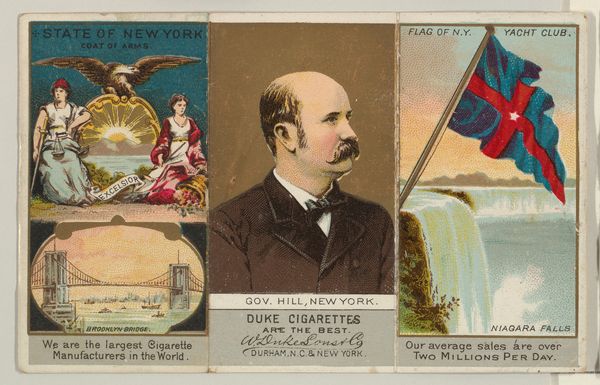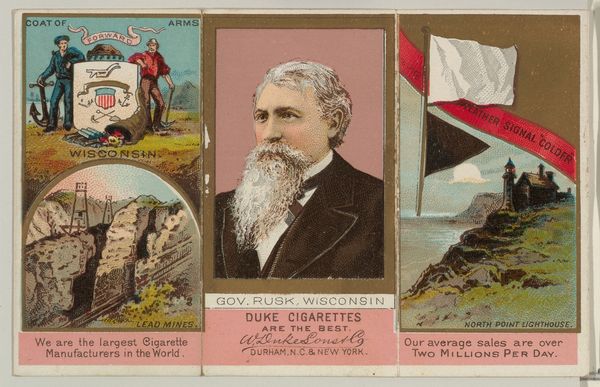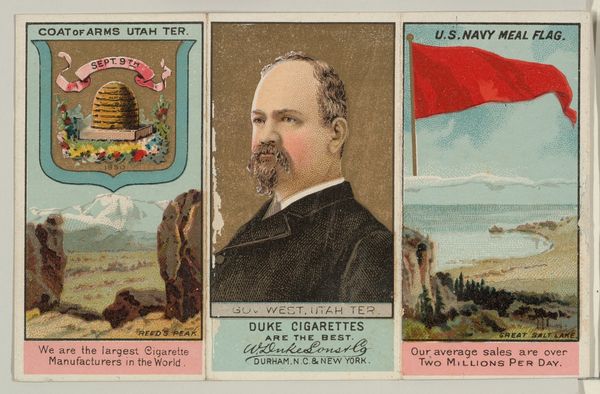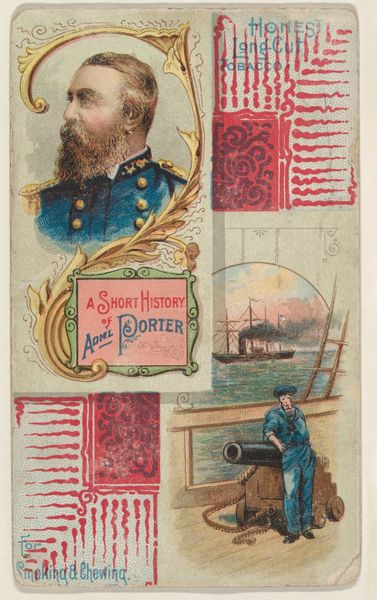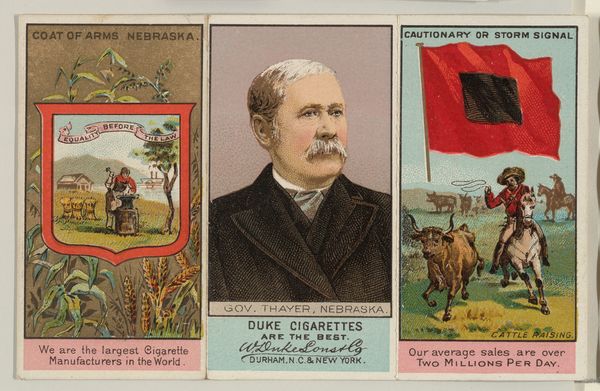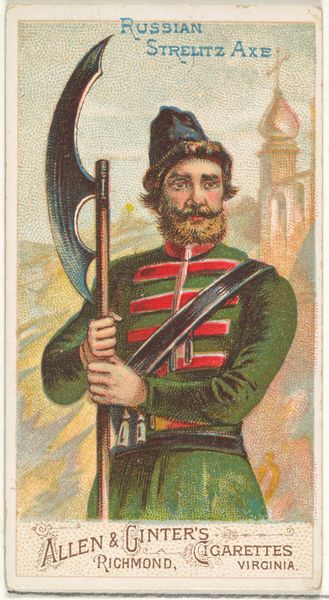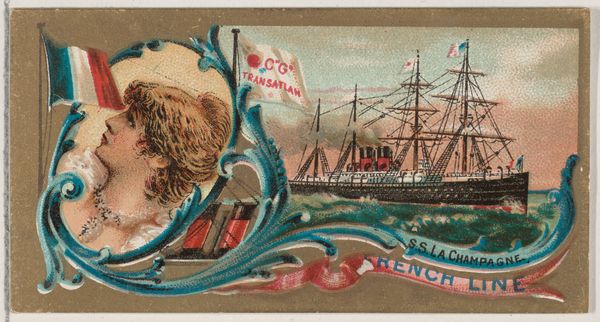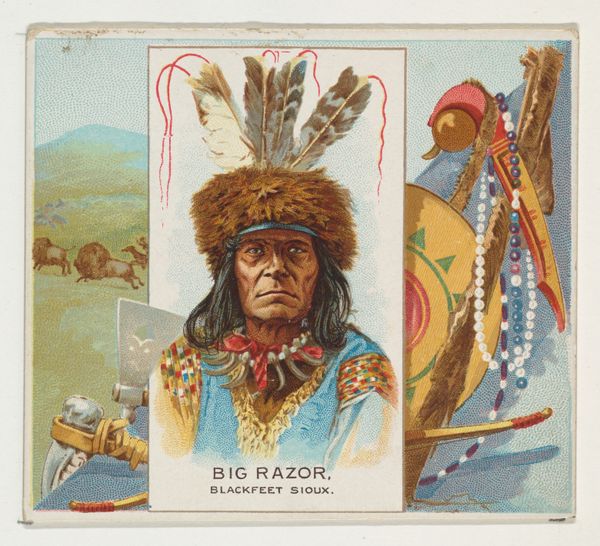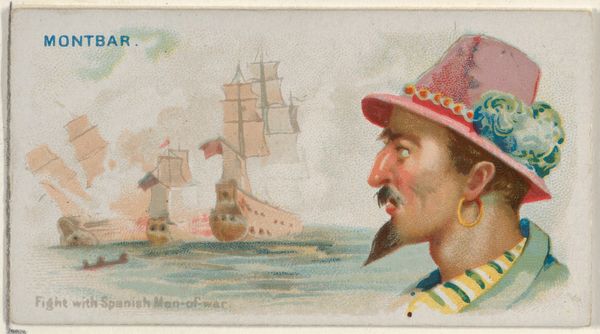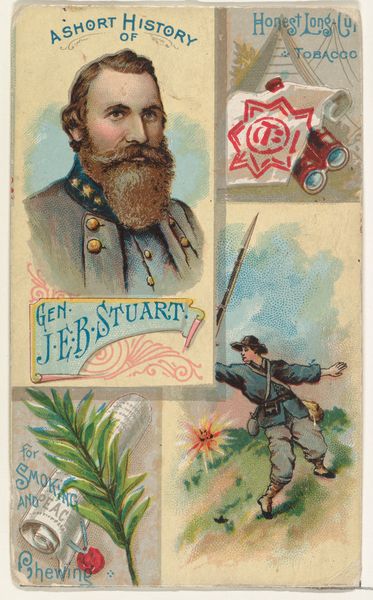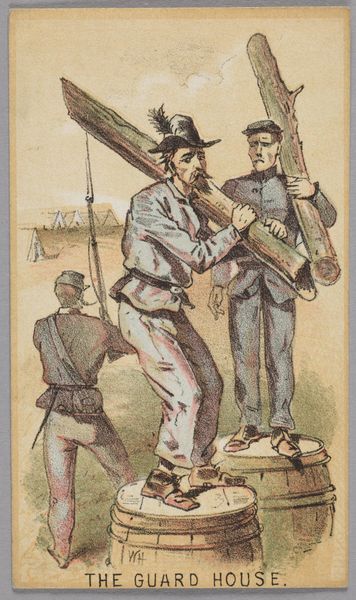
A Montana Cowboy, from "Governors, Arms, Etc." series (N133-2), issued by Duke Sons & Co. 1885 - 1892
0:00
0:00
Dimensions: Sheet (unfolded): 2 3/4 × 4 5/16 in. (7 × 11 cm) Sheet (folded): 2 3/4 × 1 3/8 in. (7 × 3.5 cm)
Copyright: Public Domain
Editor: This is "A Montana Cowboy" from the "Governors, Arms, Etc." series by W. Duke, Sons & Co., dating between 1885 and 1892. It's a coloured-pencil print. It is really three little panels put together: A cowboy in the middle is framed by Montana's coat of arms on one side and some rocky scenery with a signal flag on the other. The image has an advert beneath it and I am struck by the contrast between the romantic depiction of the cowboy life, and the commercial, even exploitative context, because these cards were packaged with cigarettes. What’s your interpretation? Curator: The layering of imagery is fascinating here. As you noted, it’s not just a portrait. The panels flanking the cowboy represent a deliberate construction of Montana as a territory – landscapes and symbolic imagery tied to an emerging identity. This card performed a cultural function. The Duke company helped circulate a very specific vision of the American West at a time when the West itself was undergoing rapid transformation, impacted by industrialization, settlement, and the displacement of indigenous populations. Do you think the cigarette advertisement played into this western imagery? Editor: Absolutely! It feels like they're selling a lifestyle along with the cigarettes, this rugged, independent image of the West. Sort of "smoke these and be a cowboy yourself!". There is such a blatant mix of consumerism and myth making. So the commercial aspect helped _shape_ that romantic imagery? Curator: Precisely! The card isn't just *reflecting* a pre-existing idea of the "Montana Cowboy", it's actively *creating* it, linking it to notions of American identity and progress, all within a system designed to encourage consumption. Editor: That's a really interesting point about creating the myth, not just reflecting it. It's almost like they're inventing tradition! This makes me think more deeply about the messages behind the visual culture that we are consuming, then and now. Curator: Exactly, examining these cards as artifacts, rather than just images, can offer valuable insight into the cultural values being promoted during that time, and how they still impact how the West is perceived even today.
Comments
No comments
Be the first to comment and join the conversation on the ultimate creative platform.

